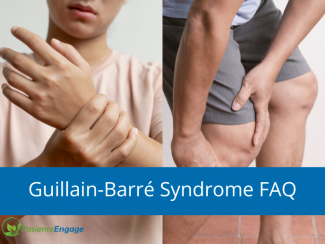
India and South-east Asia has high incidence of anaemia. Family practitioner Dr Gita Mathai tells you all you need to know about this often-silent threat that can pose many complications.
What is anaemia?
Anaemia (or Anemia) is a generic term for low haemoglobin in the blood from any cause. It is not a disease by itself. It can occur in different forms and be caused by many factors.
Anaemia is diagnosed when the haemoglobin value checked in the laboratory is less than: 17 gm/dl in newborns, 11 gm/dl in children and adolescents, 14 gm/dl in adult males, 12 gms/dl in women.
In south-east Asia, 65% of preschool children, 48% of pregnant women, 43% non-pregnant women and 2% of adult males are affected. It is a widespread international problem but is often unrecognised until complications set in.
More than 90% of adolescent Indian girls are anaemic (anemic).
42% of Indian mothers were underweight as compared to 16.5% for Sub Saharan Africa.
"Young newly married women are at the bottom of household hierarchies. So at the same time that Indian women become pregnant, they are often expected to keep quiet, work hard and eat little". Dr. Shella Duggal said that almost every pregnant woman she treats in her visits to Delhi's slums is severly anemic. "Parasites, spread by poor sanitation and dirty water, are a crucial reason. So the first thing we do is deworm them and give them iron supplements. And then I tell them to eat."
What is haemoglobin?
Red blood cells transport oxygen to all the organs and tissues in the body. Each red blood cell contains 280 million haemoglobin molecules. Each molecule of haemoglobin, in turn, consists of haeme and a protein called globin. Each haeme group contains an iron atom, and this is responsible for the binding of oxygen. The presence of haemoglobin in blood increases the oxygen carrying ability of a litre of blood from 5 to 250 ml. Men have about 5.2 million red blood cells per cubic millimeter of blood, and women about 4.7 million per cubic millimeter of blood.
How long do red blood cells survive?
They survive in the body for about 120 days. After they die, the iron is stored in the body and reused. Men have about 6 months worth of iron stores and women 3 months worth.
What causes anaemia?
Red blood cells are produced in the bone marrow. They survive for 120 days, after which they are destroyed in the spleen.
The commonest cause of anaemia is nutritional deficiency of iron, trace elements like copper, zinc, selenium or the vitamins (B12, riboflavin and folic acid mainly) required for the production of haemobglobin.
Even with adequate nutrition, anaemia can occur if there is increased blood loss, as in worm infestation, prolonged heavy menstrual bleeding, piles, intestinal polyps or peptic ulcer.
There may be increased destruction of red blood cells in diseases like malaria or if the spleen in enlarged for any reason. Some genetic defects in the red blood cells, like sickle cells or thalassemia, make their life span shorter than the normal 120 days. This is because their size and shape is abnormal, so they do not survive and are rapidly destroyed.
Chronic diseases affecting the liver, kidney, autoimmune diseases, cancer or even chronic infections like HIV cause anaemia.
The bone marrow which produces the red blood cells may stop working efficiently due to radiation, replacement with cancer cells or because they have died (aplastic anaemia).
Some medications like valporic acid and methotrexate can interfere with RBC production.
Some conditions causing anemia are temporary. Others are long lasting and have to be tackled on a permanent basis.
Complications of anaemia
Mild anaemia causes an inexplicable feeling of weakness and fatigue. As there is shortness of breath with exertion, the capacity to work is reduced. Children perform poorly in school as their attention and concentration span is reduced.
The heartbeat may be rapid or irregular. There may be tinnitus (ringing in the ears) or dizziness. In older people, cognition may be diminished. Breathlessness, swelling of the feet and abdomen may occur.
Pregnant women, who are anaemic, are more likely to have abortions, or if they go to term, produce small babies with reduced inadequate iron stores. 40% of the deaths that occur in childbirth are due to anaemia.
The heart requires oxygen to work efficiently. Anaemia reduces the oxygen carrying capacity of the blood. Starved of oxygen, the heart tries to compensate by beating faster and harder and increasing its muscle mass. This can result in distortion of the conduction system in the heart and arrhythmias. 43% of the people who had heart attacks were anaemic. The heart can also “fail” its main function as a pump that circulates blood all over the body. Since there is no forward movement of the blood, back pressure builds up. Fluid leaks out of the veins and accumulates first in the feet, and then in the abdomen and lungs.
Some people with anaemia develop pica with a perverted appetite, eating things like mud, bricks, ice, chalk or clay.
Children who are anaemic may develop breath-holding spells. The exact reason is not known but it is a symptom marker for anaemia.
How can we prevent/ treat anaemia?
The daily requirements of iron are:
- Children 1 - 3 years old: 10 mg
- Teenage boys: 12 mg
- Teenage girls and premenopausal women: 15 mg
- Pregnant or nursing women: 30 mg
- Adult men (up to age 50): 10 mg
- Older men and women (over age 50): 10 mg
We can absorb iron from the food we eat. Good sources of iron are meat particularly red meat, liver, chicken, pork and fish. Vegetarian sources are green leafy vegetables, tofu, peas, beans and dried fruits. Vegetables do not contain as much iron as meat and fish. The iron in vegetables is less soluble than the iron in meat and fish. This is because of other complex molecules like phytates that are naturally present in vegetables. They combine with the iron in the food. It is then rendered insoluble, so instead of getting absorbed into the body it gets excreted.
Nutritionist Kohila Govindaraju tells you what to eat to manage iron-deficiency anaemia.
The absorption of iron naturally from food is erratic. The best way to correct anaemia is through iron supplements. Do note that iron supplements can only correct anaemia that is due to pure iron deficiency and not anaemia from other causes like vitamin deficiency or chronic disease. Iron tablets can cause nausea, vomiting, constipation or black stools. They should be taken after food with a glass of water. They should not be combined with zinc or calcium supplements as these interfere with absorption.
Anaemia due to vitamin deficiency, genetic defects, chronic diseases, failure of the bone marrow or cancer does not respond to iron supplementation. It requires specific diagnosis and treatment.
Ref:http://www.nytimes.com/2015/03/03/world/asia/-pregnant-women-india-dang…






